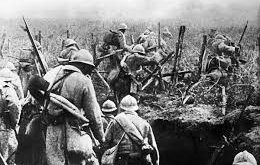Building bridges is an old technology and it has been refined and advanced over the years. While bridges are usually considered among the safest of human created structures, accidents do happen. A bridge can partially or fully collapse due to various reasons such as structural defects, overloading and lack of proper repairs and maintenance. Other factors why a bridge may collapse include sabotage, explosions or natural disasters such as earthquakes. For better clarity, here is a look at some of the biggest bridge collapse accidents in history.

Mahakali River bridge – This was a suspension bridge across Mahakali River, also known as Sharda River or Kali River in Nepal. The bridge had collapsed in November 1974, resulting in deaths of 148 people. Not many details are available about the cause of the bridge collapse, as media scrutiny in this pristine part of the world was not so active at that time. The number of fatalities is as per official records.
Maddur railway bridge – This railway bridge was across the river Shimsha, which connects Mysore city to the town of Maddur. Due to heavy flood in the river, the bridge collapsed when a train full of passengers was passing over it. Five carriages fell into the flooded river, resulting in deaths of around 150 people.
Whangaehu River Rail Bridge – Also referred to as the Tangiwai disaster, this accident happened on 24 December 1953. The bridge had collapsed when an express passenger train was passing over it. The engine and 6 carriages fell into the river, resulting in deaths of 151 people. Investigations revealed that the bridge had collapsed due to rapid mudflow, which was triggered by the collapse of a crater lake nearby. The Tangiwai disaster remains to be New Zealand’s worst bridge accidents.
Angers Bridge – This was a suspension bridge across the Maine River in Angers, France. On April 16, 1850, the bridge collapsed when French soldiers were marching on it. A total of 226 deaths were reported in this bridge collapse. Investigations revealed that the bridge is likely to have collapsed due to the phenomenon of mechanical resonance. Moreover, there was a storm in the area and corrosion was found on the anchors.
Eitai-bashi Bridge – Built in 1698, this bridge was largely made from wood. Over the years, it had become weak due to lack of proper repair and maintenance. It collapsed on September 20, 1807, as hundreds of people walked on it during a festival. Casualties are estimated to be up to 2000 deaths. Surprisingly, an iron bridge was built later, which also collapsed in 1923 due to an earthquake. Later, an earthquake resistant bridge was built, which is active even today.
 Newspatrolling.com News cum Content Syndication Portal Online
Newspatrolling.com News cum Content Syndication Portal Online







